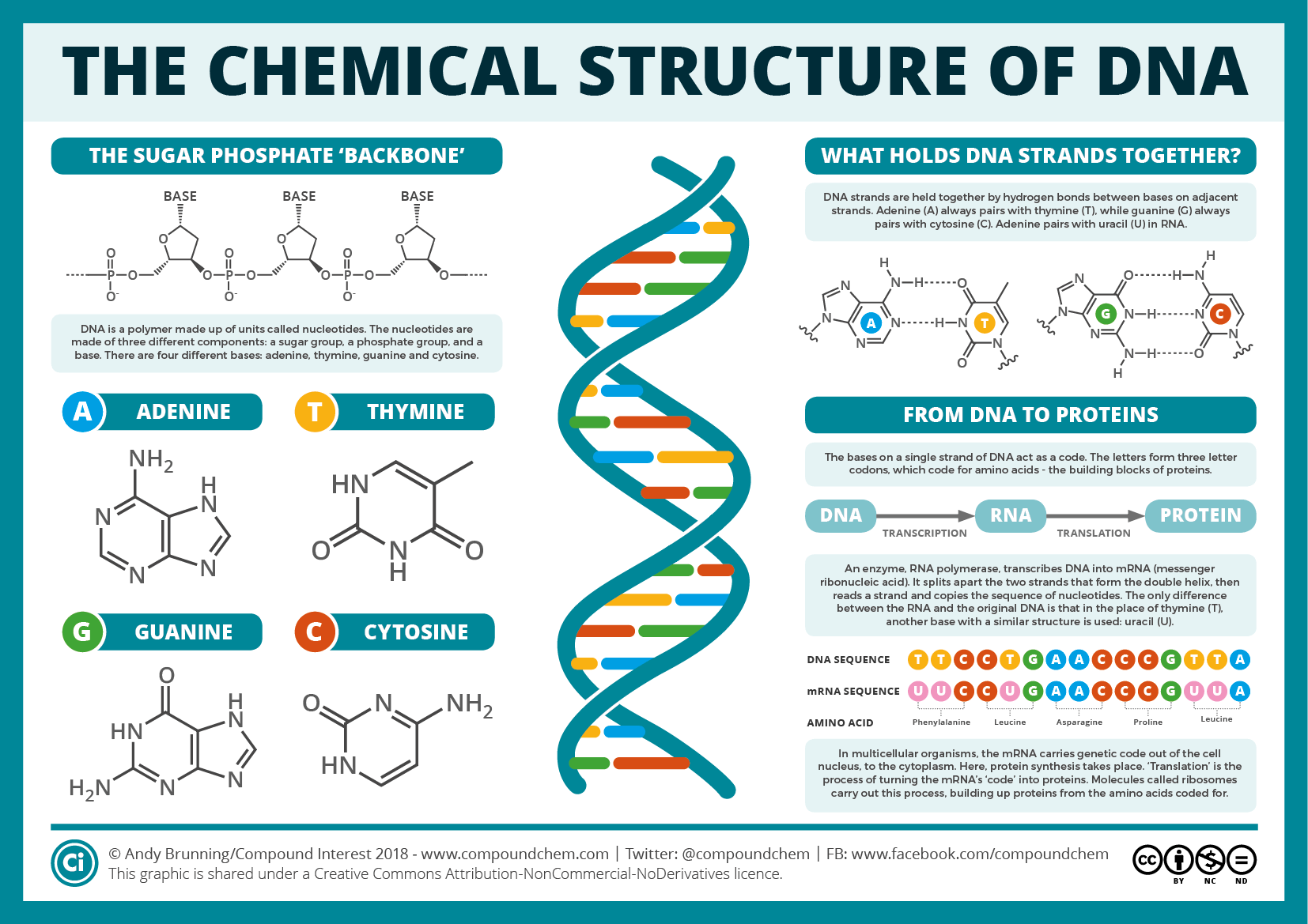While dna has all the data that makes up every organism it only has 4 nucleotides building blocks adenine cytosine guanine and thymine

While DNA has all the data that makes up every organism, it only has 4 nucleotides building blocks: adenine, cytosine, guanine, and thymine.

DNA, or deoxyribonucleic acid, is a remarkable molecule that holds the instructions for building and maintaining all living organisms. It serves as the blueprint that guides the development, function, and reproduction of every living thing on Earth. While DNA is an incredibly complex molecule, it is composed of just four building blocks known as nucleotides.
The nucleotides in DNA are adenine (A), cytosine (C), guanine (G), and thymine (T). These nucleotides are arranged in a specific sequence to create the genetic code that determines an organism’s traits and characteristics. Each nucleotide consists of three components: a sugar molecule called deoxyribose, a phosphate group, and one of the four nucleobases (adenine, cytosine, guanine, or thymine).

The DNA molecule itself is often described as a double helix, resembling a twisted ladder. The sugar-phosphate backbone forms the sides of the ladder, while the nucleobases pair up and form the rungs. Adenine pairs with thymine, and cytosine pairs with guanine, creating complementary base pairs. This pairing is essential for DNA replication and the accurate transmission of genetic information during cell division.
The simplicity of the DNA molecule belies its vast informational capacity. Within the sequence of nucleotides lies an astonishing amount of information, coding for all the proteins and molecules necessary to build and sustain life. The precise arrangement of adenine, cytosine, guanine, and thymine in the DNA sequence holds the key to an organism’s traits, from its physical appearance to its susceptibility to certain diseases.
Although DNA consists of only four nucleotides, the potential combinations are virtually limitless. The human genome, for example, contains approximately 3.2 billion nucleotides arranged in a unique and specific sequence. This remarkable diversity allows for the tremendous variety and complexity of life.
Understanding the structure and composition of DNA has revolutionized the fields of genetics and molecular biology. It has paved the way for advancements such as the mapping of the human genome, gene editing technologies like CRISPR, and the development of personalized medicine.
In conclusion, DNA, with its four nucleotide building blocks (adenine, cytosine, guanine, and thymine), is a true marvel of nature. Its simplicity and complexity intertwined make it the information storage system of life, holding the keys to the incredible diversity and functionality of organisms on our planet.
Source: National Human Genome Research Institute - DNA Structure
Tags
Share
Related Posts
Quick Links
Legal Stuff

